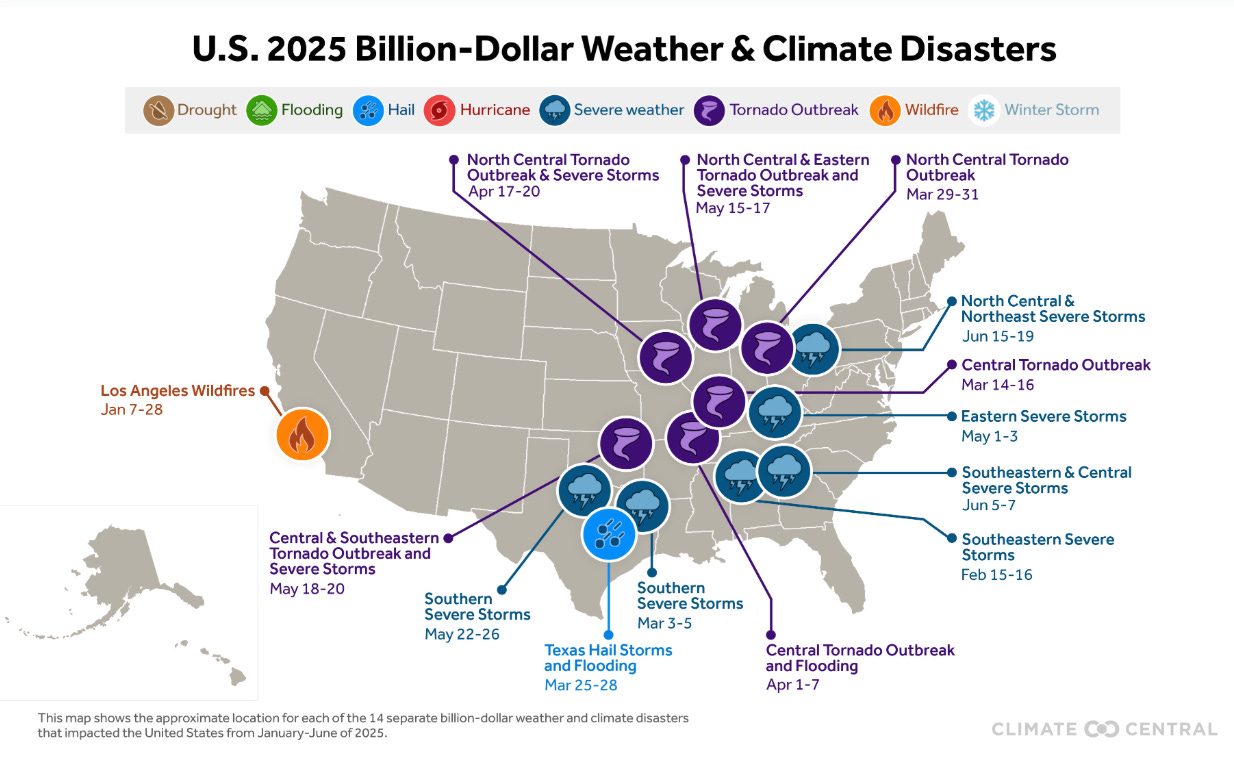When Washington Stopped Counting, Climate Central Took Over
After the Trump administration ended the federal disaster-cost database, Climate Central revived it — because what you don’t measure, you can’t manage.
“What gets measured gets managed.” —Peter Drucker
The Data Gap That Wasn’t an Accident
When the Trump administration quietly stopped updating a federal database that tracked the cost of extreme weather, it didn’t just delete a spreadsheet — it erased a mirror.
That database, maintained since the 1990s by NOAA, catalogued every U.S. disaster that caused at least $1 billion in damage.
It was one of the few government tools that made the cost of weather disasters visible — year over year, region by region, dollar by dollar.
The reason for the shutdown was never technical.
It was political.
Because when you can measure something, you can manage it. But when you stop measuring, you can ignore it.
That logic echoes a famous “Trumpian” quote during the pandemic:
‘If we stopped testing right now, we’d have very few cases, if any’
Keep reading with a 7-day free trial
Subscribe to G2 Weather Intelligence to keep reading this post and get 7 days of free access to the full post archives.


